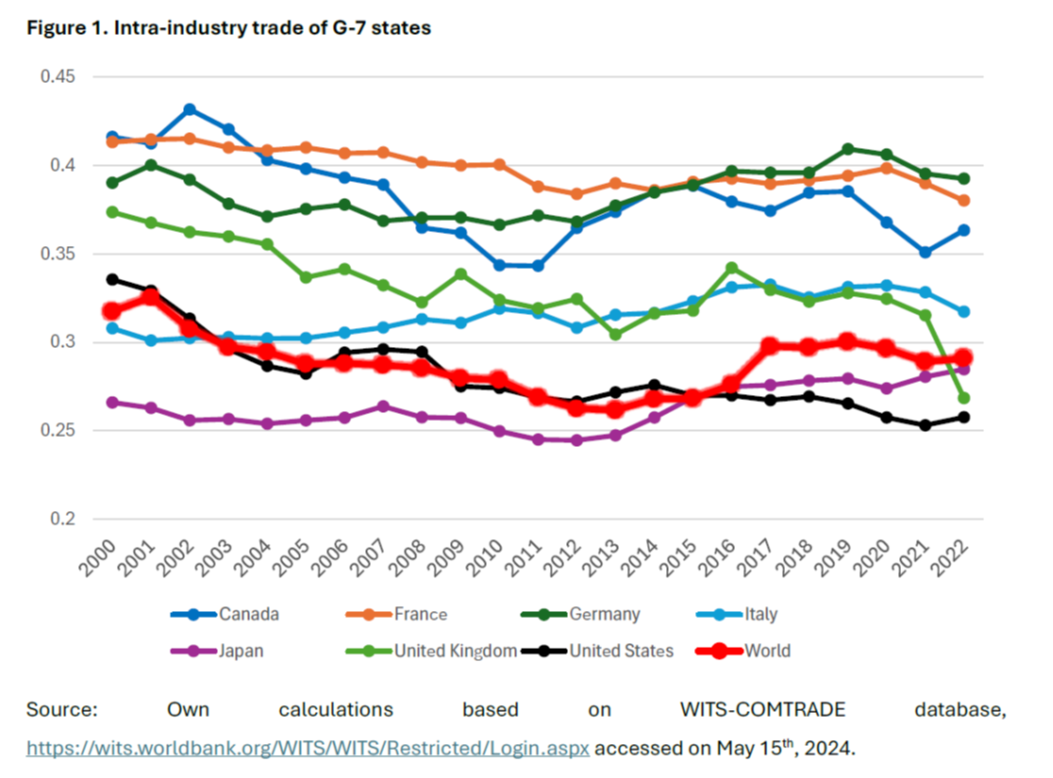Oren Cass argues the idea of comparative advantage driving trade is outdated. I agree to a certain extent, but he doesn’t explain why. I’d say intra-industry trade (IIT) – a staple of academic research since the 1980s – is one reason, but that does not provide justification for protection. In fact, his ignorance of IIT suggests his case for protectionism is ill-founded.
How much intra-industry trade is there? Some recent estimates from Czarny, Elżbieta & Folfas, Pawel & Szarek-Piaskowska, Aleksandra. (2024). Intra-industry trade: a portrait of global patterns during 2000-2022.
Source: Czarny et al. (2024).
The US share has gone down a bit since 2018, perhaps due to export controls (although that’s conjecture on my part). Even then, IIT accounts for over a quarter of total US trade.
See also Richard Baldwin‘s recounting of IIT over time.

The big thing that Cass et al. really don’t understand is intra*firm* trade. The prevalence of intrafirm trade, and even the prevalence of firms that both import and export, is what really wrecks the new right-wing trade ideology. It implies that tariffs are taxes imposed inside of firms, putting wedges within complex production processes. It’s the government putting itself between the left hand and the right hand.
A glance at the UK series in Figure 1 shows what Brexit, among other things, did to intra-industry trade with a formerly-great industrial economy. Perhaps the U.S. can expect the same under a high-tariff regime.
“Protection” is not the real goal. Destroying the US is. Tariffs work best on new, ip technology. Explains a lot.